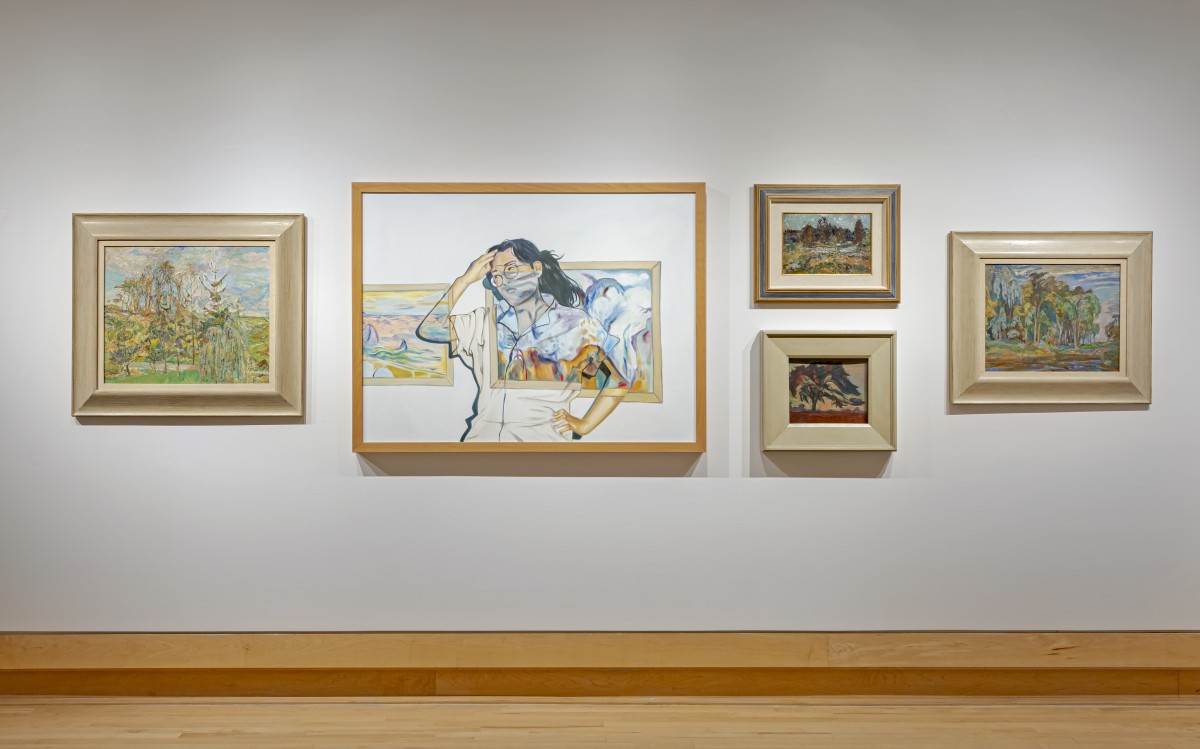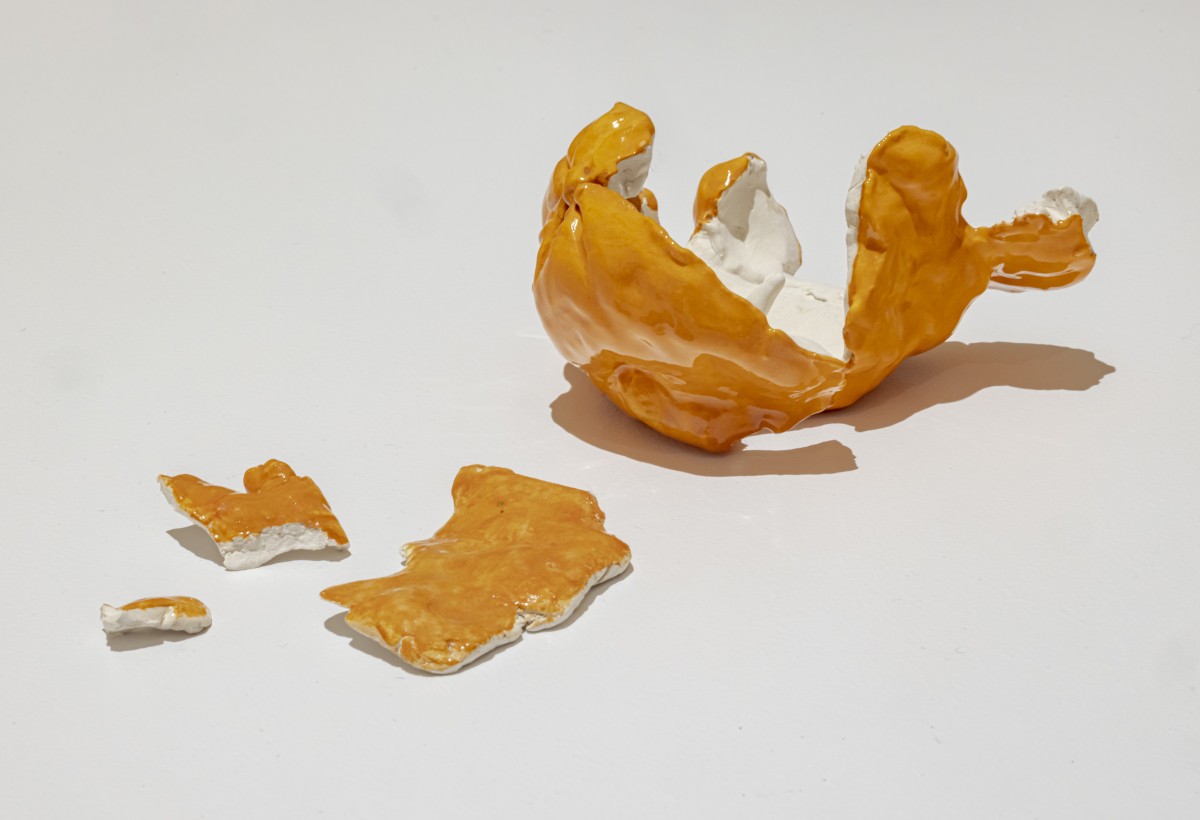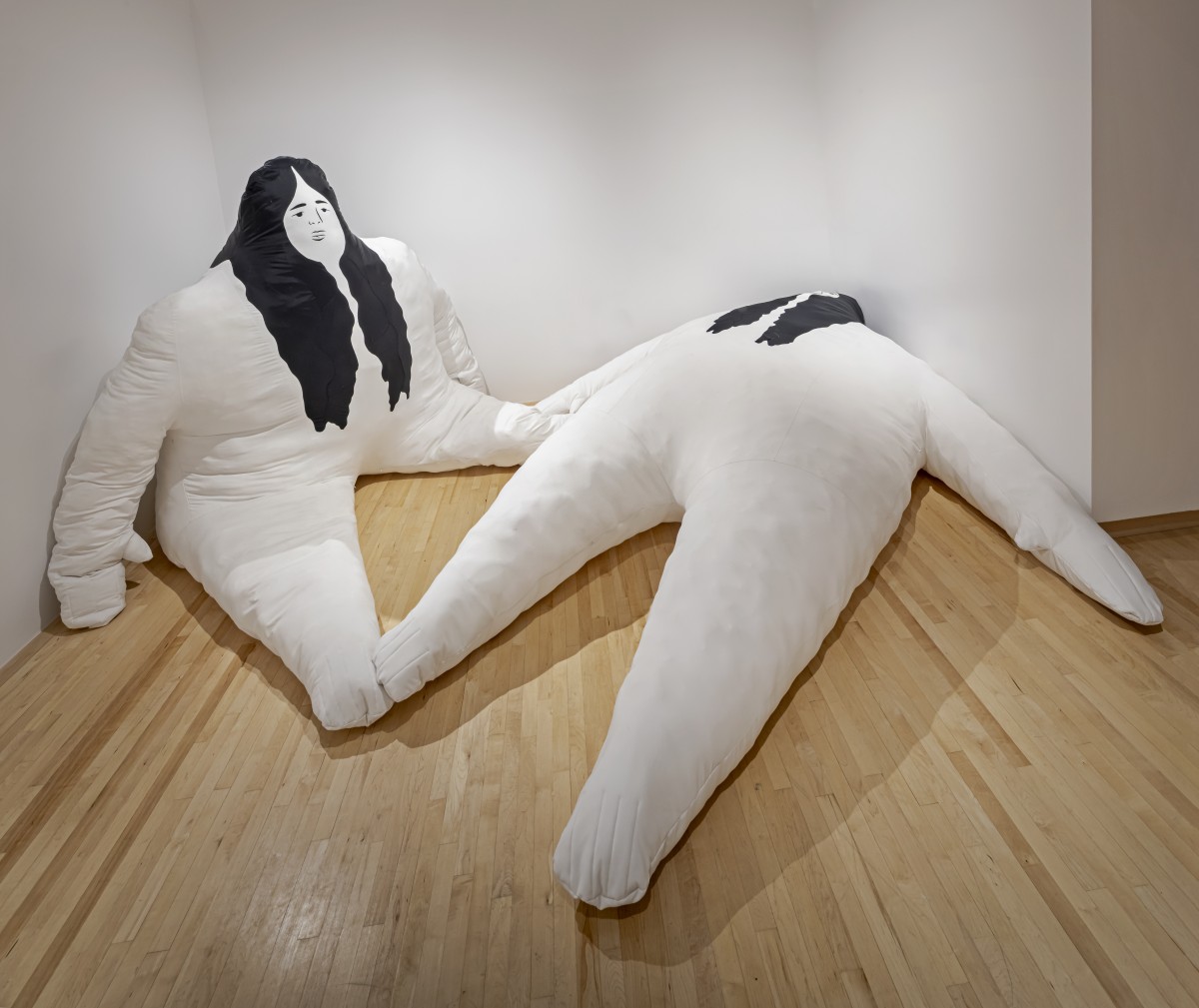Seeking a place to feel queer
Artists Ness Lee and Florence Yee join forces to display their queer Asian diasporic perspectives and experiences in Elusive Desires: Ness Lee + Florence Yee, on view now at the Varley Art Gallery of Markham through January 2, 2022.

Elusive Desires, Installation view, Varley Art Gallery of Markham, 2021. Photo Toni Hafkenscheid.
Elusive Desires, an exhibition by artists Ness Lee and Florence Yee, embodies a shared space that brings forward the subjectivities and intimacies of queer Asian diaspora through art. Both descendants of the Chinese diaspora (Hakka and Cantonese, respectively), the artists visualize queer worldmaking and dive into themes like gender, race, diasporic identity, transnational history, colonialism and traditional ideologies. Both are also no strangers to the AGO as they have exhibited works inside the Gallery’s walls before. Lee was part of the RBC x AGO Artist-in-Residence Program from 2019-2020 and Yee is currently doing a residency at The Robert McLaughlin Gallery.
The inception of Elusive Desires began three years ago, born out of curator, scholar and professor Marissa Largo’s interest in Asian diasporic art. Largo wanted to spotlight diasporic and racialized Canadian artists who have been pushing back against being influenced, oppressed and controlled by social constructs. Viewing Yee and Lee’s work as blueprints for the way the world ought to be, Largo explains “Florence’s early work, like Finding Myself in the Museum, struck me as not only critical of the omissions of Western art canons, but I was equally moved by its wit and seductive technique. Ness Lee’s works are intimate, tender, and simultaneously take up space while holding space for others.”
So how do these artists fit together in this exhibition? “Florence’s work is deeply theory-informed and their cerebral quality compliments Ness’ more embodied and emotive approach to art making,” said Largo. “To me, the two artists together represent ‘head and heart’ and illuminate how Elusive Desires is both a critique of the way things are and queer worldmaking for ethical considerations of archives, each other, the spaces around us.”
Following a visit to the exhibition, we asked each of the artists which piece is their favourite. Here’s what they chose.
Florence Yee: My favourite piece in the show is the collection of ceramic tangerine peels, Please Help Yourself. It is an ongoing series done with my friend and frequent collaborator, Arezu Salamzadeh. The offering of fruit is a gesture of hospitality, while the discarded peels become a symbol of time well spent. I see them as minor monuments to our relationship, as well as all those who were invited into the project.
Yee’s ceramic tangerine peels spotlight the Cantonese hospitality practice of sharing among guests or strangers. A common everyday scene in Asian culture, the delicate pieces spark a sense of warm comfort for visitors. Yee looks at Please Help Yourself (2019-ongoing) as an alternative monument to Canadian commemorative public art like statues of colonial figures. The wall text reads, “The peels evidence an ethic of reciprocity that racialized settlers—who are guests on Indigenous land—may practice with others in this nation, especially with those who are displaced.”
As part of this project, during the most isolating period of the pandemic last year, Yee and Salamzadeh shipped a small amount of clay to family and friends. Cheekily, they asked them to “share a tangerine” and to send back their own clay peels, which were then fired and glazed into ceramics. Despite being distanced and isolated, the two were able to collaborate and create art grown out of kinship and shared cultures.
Ness Lee: The art piece that resonates with me the most would be the installation as a whole. It is often hard for me to find the words in spaces of intimacy—there’s so much I feel and so little to say. To be surrounded by understanding is a feeling hard to find, especially within myself. I have often been revisiting the notion of watching yourself fall. In this case, the two waves, being a part of the same soft waters while witnessing one another in their states—to bear witness to a part of you that can viscerally feel what’s to come and the other living-self being the fall. A downfall as a release.
Lee’s enormous installation, a soft place to land (2021), invites visitors to immerse themselves in a space that welcomes all unconditionally. Two giant figures stretch across the walls, coming to meet at the centre in an embrace. Sparking a contrast against the hard edges of a gallery space, fluid, soft lines overflow and form into soft bodies in this universe. When you stand in the centre of the waves, you will feel as though you are being tenderly enveloped. Rug tapestries depicting intertwined genderqueer figures hang like clouds above and more reflective figures hang overhead the entire installation. As a former Markham resident, Lee wanted to create a space to express her queerness, intimacies and desires in a suburb that oftentimes restricts itself to a picture-perfect ideal − with little room for QTIBIPOC subjects. The wall text states, “Queer Asian diaspora exists in Markham, but space and time is seldom made for it. This makes Lee’s intervention so vital: just as the artist’s queer diasporic imaginary has been shaped by her experiences of suburban belonging, so too is this installation.”
Another exciting work by Lee in this exhibition that AGO visitors may remember is we have together (2020), two soft sculptures that invite visitors to touch, engage and play with them. Previously featured in Walker Court on Family Day in 2020, a takeover by Lee during her time as Artist in Residence at the AGO, these voluptuous queer nude bodies unapologetically fill the room and willingly hold space for others.
Elusive Desires is on view now at the Varley Art Gallery in Markham, Ontario until January 2, 2022. Click here for more details about the exhibition, upcoming programming and catalogue. Interested in checking out the RBC x AGO’s Artist-In-Residence Program that included Ness Lee? Visit https://ago.ca/artist-in-residence. Applications for the 2022 Artist-in-Residence Program are due November 30, 2021.
RBC X AGO Artist-in-Residence program is generously supported by





